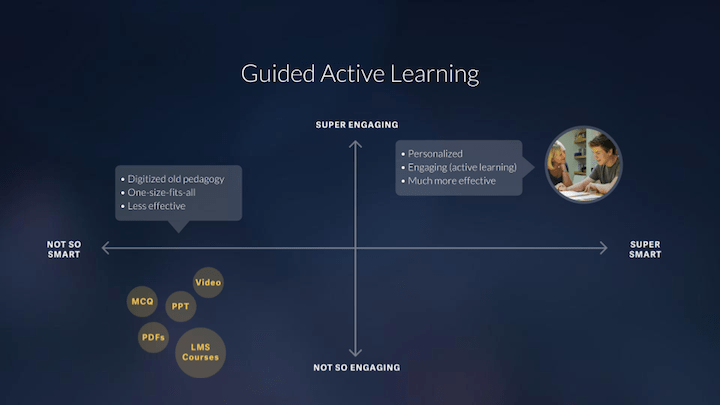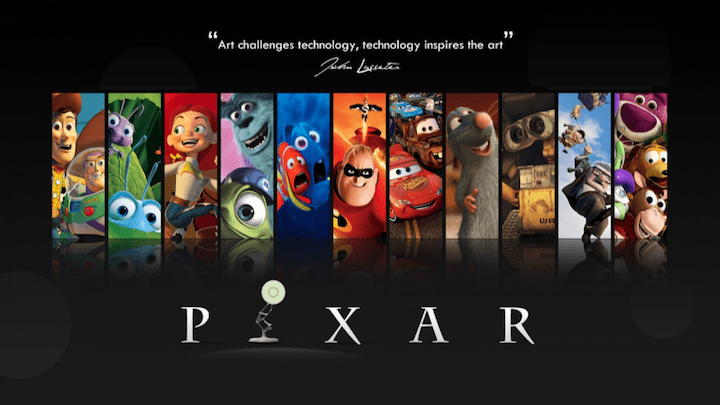A few weeks ago, I attended ETCPS 2017, the Educational Technology and Computational Psychometrics Symposium hosted by ACTNEXT by ACT in Iowa City. It brought together academics in computational psychometrics and innovators in education technology to discuss the future of learning and assessment.
For those unfamiliar with computational psychometrics: psychometrics is concerned with theoretical models for the measurement of skills, abilities, and other classic “unmeasurables”, while the computational piece is the computer science and big data-tools used in that measurement process. There’s an obvious relationship between computational psychometrics and edtech as more educators turn to technology to help students build vital skills such as critical thinking, flexibility, and curiosity, in order to prepare for future careers.
I was honored by the invitation give the keynote speech “Where are we Going with Learning and Assessment?”
My journey started over a decade ago when doing a PhD in the area of Intelligent Tutoring Systems and Educational Data Mining. I’m now Founder and CEO of Smart Sparrow, and I have probably spent way too much time designing digital learning experiences and assessment. I guess that gave me a perspective worth sharing.
Learning analytics and edtech provide tremendous opportunities for 21st Century educators and institutions. But the questions stand: “Where are we going? How will we get there? What is the actual way in which new technology will impact learning and assessment?”

Schools are investing in the quality of digital learning experiences
First, let’s zoom out a bit and think about what’s been happening with digital transformation (or “digitalization”) in higher education.
About 10 years ago, when an average school decided to “go digital” they’d implement a university-wide learning management system (LMS). With it, instructors could migrate their existing “analog” material to the digital medium. So presentations became powerpoints, notes became PDFs, and lectures became videos. Notably, assessment became multiple choice quizzes — not because they are any good, but mostly because it’s easy to create and grade MCQs.
If you ask anyone who taught digitally or oversaw that process, chances are they’d admit the quality of the digital learning experience suffered. Some would have said “online learning sucks”… but it didn’t really matter. What mattered was that those innovators gained competitive advantage in a new digitally-enabled global market. The promise was that you could offer online learning to anyone, anywhere. So they did.
Now fast-forward to today, and almost every single institution is providing some form of blended or online learning. As a result, the basis of competition has shifted; it’s no longer enough to just offer an online degree or a course, because that’s a given. If you want a slice of the lucrative global digital learning market you need to offer something that’s either cheaper or better than your competitors.
But competing on price leads to a race to the bottom, so if you’re planning for long-term success, you’d better compete on quality of the digital learning experience.
That’s where the market is now, in 2017 and leading into 2018: more and more schools are competing on quality of their offering. And that’s a good thing because when schools compete on quality students benefit.
But how do you design for high-quality?
The truth is that there is no single answer to the question, “What is great digital learning experience?”
It’s as though we know what doesn’t work better than we know what does.
For example, we know that just pushing content into an online format and telling students, “Here’s the material for your course,” doesn’t work. We know that we lose student attention with long video lectures. We know that no matter how much we try, students will always ignore anything that doesn’t directly lead to better grades.
Asking how to create a great digital course is like asking how to create a great product. There isn’t an exact recipe — but there is a useful general process.
When it comes to great products, you follow the build-measure-learn cycle, as popularized by Eric Ries in his book The Lean Startup. The idea is to design something that meets fundamental needs, then follow it with rapid iterations of feedback from your users and try to incrementally satisfy all their needs.
The keywords there are “design” and “rapid iterations”. One of the biggest insights I can probably share is this:
Great digital learning experiences are designed from the ground up, to change and take advantage of the affordances of the new digital medium.
In my experience, there is resistance to this idea, probably because it takes more effort. The majority of people put content online and hope this means innately students will learn.
But putting content online isn’t enough (though not for lack of trying). I know this for a fact because virtually all Smart Sparrow customers originally came to us after first trying to shove their content onto a LMS (e.g. Blackboard, Canvas) which limited how they could present the content… and then realized students hated it.
Once you accept that creating a high-quality digital learning experience is not the same as creating a high-quality lecture, and additionally accept that it requires intentional learning design that starts back at step one to make sense for the new medium, you realize you better figure out all your options and what tools you have at your disposal. And then… shoot for the moon to create something amazing.

How ‘guided active learning’ and ‘authentic assessment’ are changing the game
Now that you’re thinking about the process for creating high-quality digital learning experiences, what’s next? Just like in planning traditional coursework, you think about the most effective pedagogy to meet the learning objectives. But in the online medium, things change due to the new affordances and nature of technology-enabled learning.
Research shows that the best learning — no matter the medium — is highly interactive and adaptive.
Active learning encourages hands-on engagement to spark interest and keep learner’s attention, e.g. projects, games, interactive simulations and virtual reality, but most certainly not MCQs. Here, technology affords more interesting capabilities, such as exploring the effects dangerous chemicals in a risk-free environment or virtual field trips to locations across the world.
Adaptive learning provides individualized guidance based on performance and in-the-moment needs, e.g. getting one-on-one help from a tutor. Students actually get the help they need in order to learn, and it’s inherently technology-driven in order to scale that one-on-one feedback to large cohorts. Technology further enables self-paced learning as students struggle with difficult concepts.
Combine active and adaptive and you have guided active learning — interesting digital learning activities peppered with adaptivity in the form of real-time hints, suggestions, and remedial learning pathways (resequenced content) to provide a high-quality learning experience.
Getting deeper insight into student mastery
This brings us to assessment and analytics — arguably some of the hottest topics in online learning.
Where teaching and assessment were traditionally separate entities, the future could be (should be) much more integrated. The new paradigm is called authentic assessment.
Instead of readings followed by quizzes that essentially score the ability to cram, students complete meaningful online tasks that ask them to apply their knowledge and understanding in real-world scenarios. Analytics track behavior, progress, and achievement throughout their work, so instructors get an authentic understanding of student mastery.
Here’s an example that I’m taking from a course we built called BioBeyond. In their intro biology course, students need to learn about the purpose of different vitamins for proper health in the human body. Instead of having them read something and then complete a short quiz, we designed a simulated activity where students apply their new knowledge to create a weekly meal plan that ensures adult human survival in a crazy climate — outer space. Honestly, they probably fail to get it right the first time so their space crew “dies”. Then, they try again and again until they learn what it takes to stay alive. We use learning analytics to show instructors what each student tried each step of the way, and how long it took them to figure it out. It’s a real-world learning simulation that helps students understand why they’re learning different concepts, and simultaneously helps instructors assess how much and how well students are learning.
If you want to combine authentic assessment with guided active learning, give the students advice along the way, just as their colleagues would in the real world.
For instance, I once spoke to an instructor that asked students to provide solutions for multiple case study problems, and provided fewer hints every time in order to assess mastery.
Several studies have shown that guided active learning and authentic assessment increase student persistence and improve outcomes. If you’re focusing on improving the quality of online learning experiences, I can’t suggest better places to begin.

How technology impacts learning design
This is my last point, but it’s an important one — and I’m obviously a bit biased because it is at the core of what we’re working on at Smart Sparrow.
They say if you only have a hammer, everything looks like a nail. Think about the relationship between the tools you give your instructional designers and the learning experiences they create; if you only provide LMS and PowerPoint, then designers will provide presentations and MCQ quizzes. And students will continue to hate it. The LMS is good for managing enrollment and grades, but it is not good enough for innovating learning experiences.
Pixar once beautifully described the relationship between art and technology saying, “Art challenges technology, and technology inspires the art.” Similarly, I think learning design challenges technology to innovate, and the right technology inspires new possibilities in online learning and assessment.
So if you want to improve the quality of online learning experiences, you must think deeply about the type of tools you use.
Better technology that supports research-based pedagogy that actually works is vital to the creation of high-quality online learning experiences; they give designers an expansive ability to build more effective, inspired lessons. Better assessment analytics technology can collect data on progress, performance, and pedagogical efficacy, so you can continually improve your online programs — and your ‘high-quality’ gets higher every term.
If you’re serious about improving the quality of digital learning (and you should be), upgrade your online learning design toolkit.Continue to rely on an LMS for online learning, and you will fall behind, enrollment will decline, and programs will fail.
What all this means for you
The quality of digital instruction is the new basis for competition in higher education. With the right design processes, pedagogy, and technology, you can design high-quality online learning experiences that meet the affordances of the digital medium — and that will guide your path to improved student learning and online program success.


